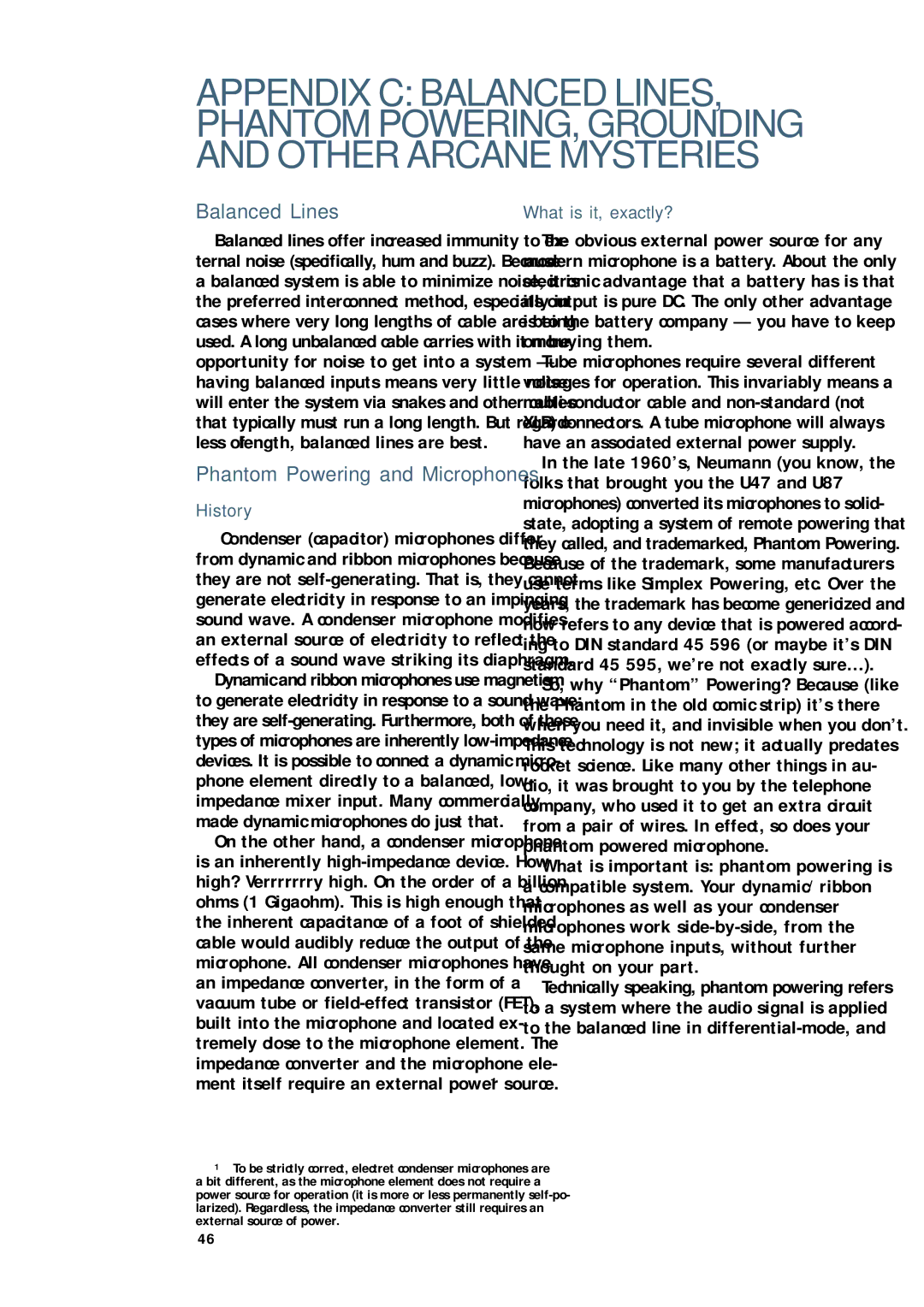APPENDIX C: BALANCED LINES, PHANTOM POWERING, GROUNDING AND OTHER ARCANE MYSTERIES
Balanced Lines
Balanced lines offer increased immunity to ex- ternal noise (specifically, hum and buzz). Because a balanced system is able to minimize noise, it is the preferred interconnect method, especially in cases where very long lengths of cable are being used. A long unbalanced cable carries with it more opportunity for noise to get into a system — having balanced inputs means very little noise will enter the system via snakes and other cables that typically must run a long length. But regard- less of length, balanced lines are best.
Phantom Powering and Microphones
History
Condenser (capacitor) microphones differ from dynamic and ribbon microphones because they are not
Dynamic and ribbon microphones use magnetism to generate electricity in response to a sound wave: they are
On the other hand, a condenser microphone is an inherently
What is it, exactly?
The obvious external power source for any modern microphone is a battery. About the only electronic advantage that a battery has is that its output is pure DC. The only other advantage is to the battery company — you have to keep on buying them.
Tube microphones require several different voltages for operation. This invariably means a
In the late 1960’s, Neumann (you know, the folks that brought you the U47 and U87 microphones) converted its microphones to solid- state, adopting a system of remote powering that they called, and trademarked, Phantom Powering. Because of the trademark, some manufacturers use terms like Simplex Powering, etc. Over the years, the trademark has become genericized and now refers to any device that is powered accord- ing to DIN standard 45 596 (or maybe it’s DIN standard 45 595, we’re not exactly sure…).
So, why “Phantom” Powering? Because (like the Phantom in the old comic strip) it’s there when you need it, and invisible when you don’t. This technology is not new; it actually predates rocket science. Like many other things in au- dio, it was brought to you by the telephone company, who used it to get an extra circuit from a pair of wires. In effect, so does your phantom powered microphone.
What is important is: phantom powering is a compatible system. Your dynamic/ribbon microphones as well as your condenser microphones work
Technically speaking, phantom powering refers to a system where the audio signal is applied to the balanced line in
1To be strictly correct, electret condenser microphones are a bit different, as the microphone element does not require a power source for operation (it is more or less permanently
46
